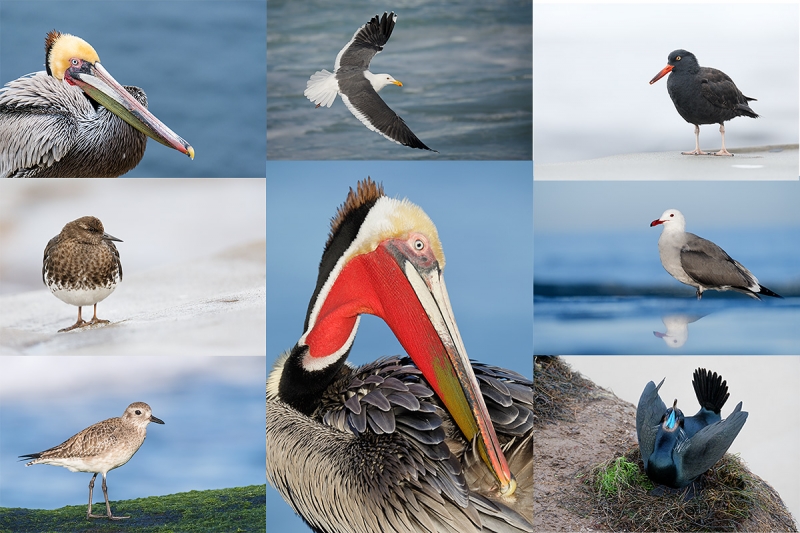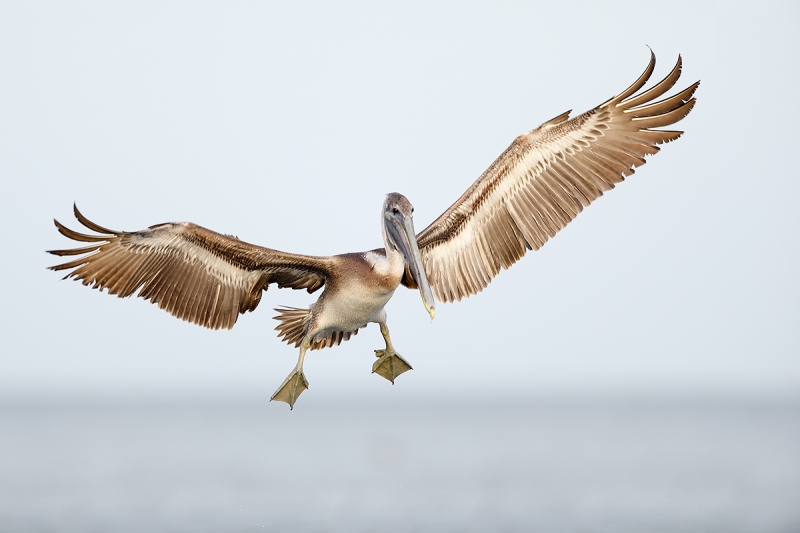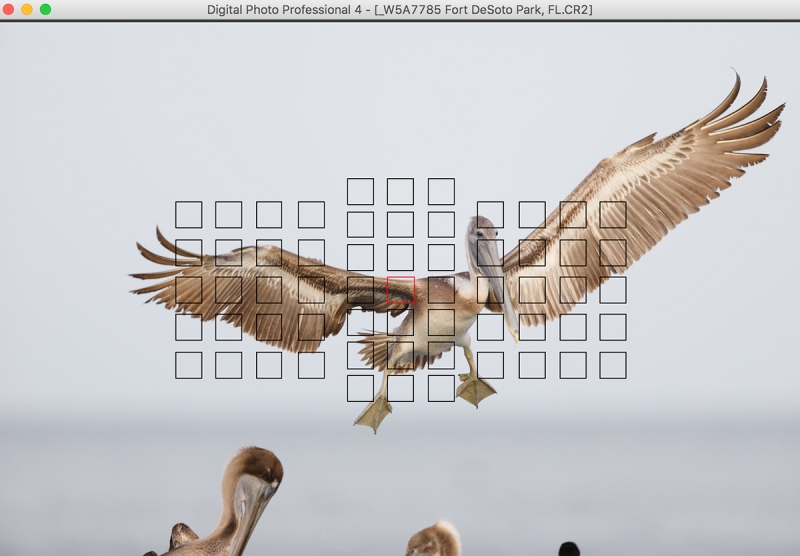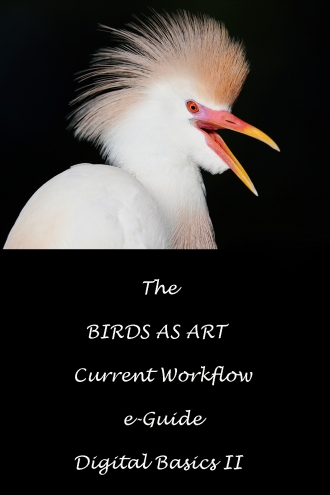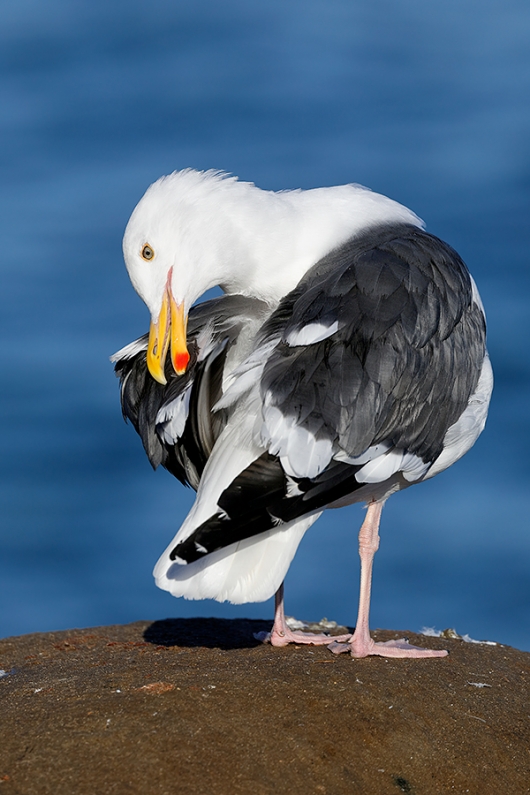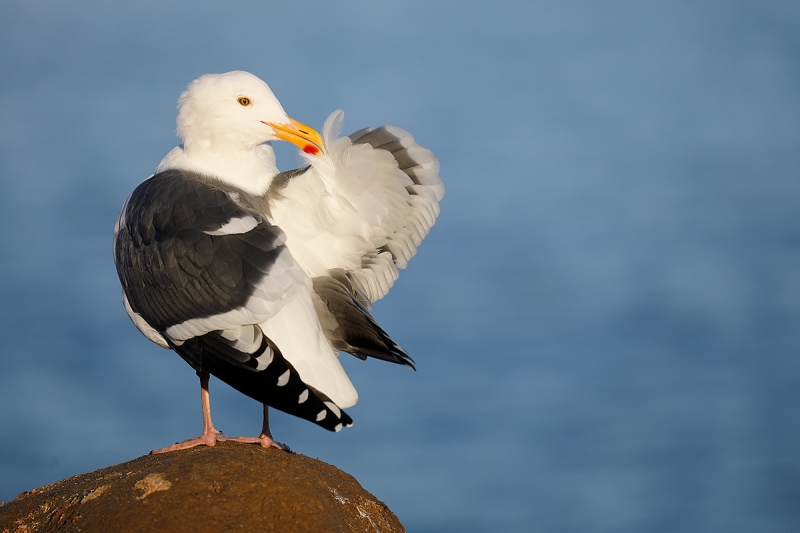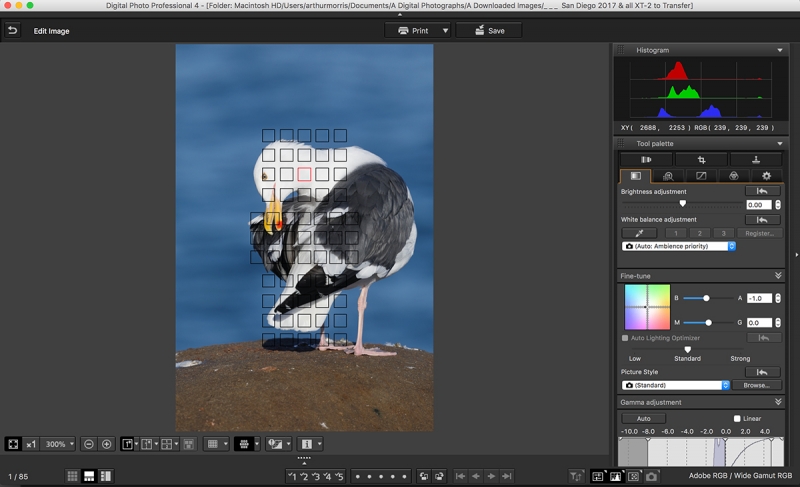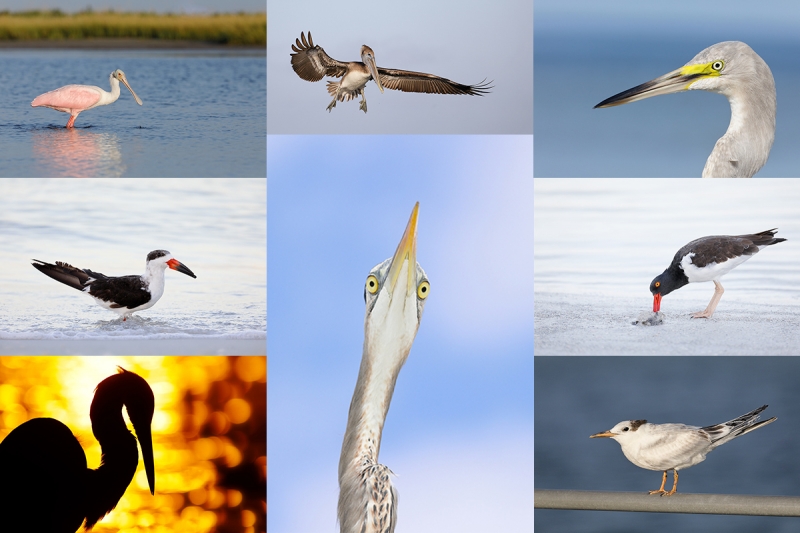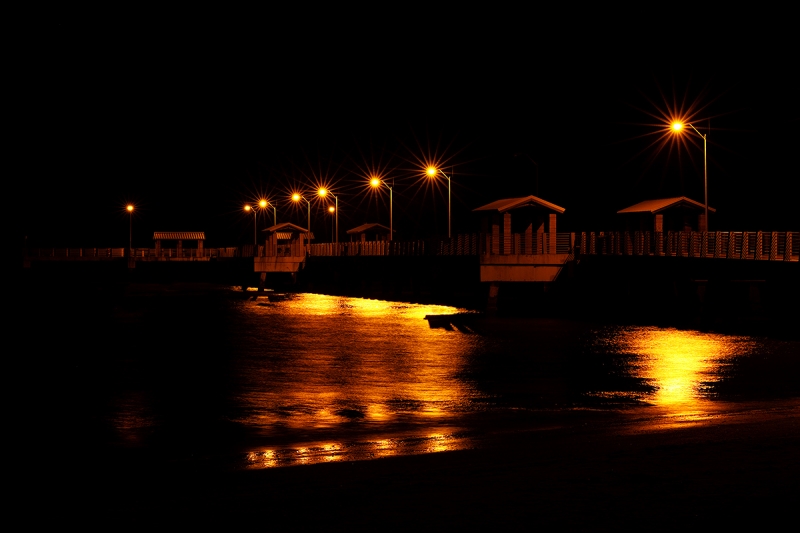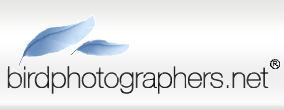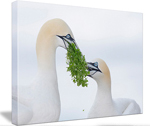October 26th, 2017 Stuff
Wednesday was one of those Roseanne Roseannadanna “It’s always something” days. It began when I could not turn off the pool’s underwater lights. I had turned them on for my very late swim on Tuesday. Then several electrical outlets in my office (in the new rooms in the back of the house) went dead. We tried all the circuit breakers in the garage with no luck. Then, just as I was about to dial Fletcher Electric Jim somehow remembered that the electrical panel for the addition were under a large canvas print of a Sandhill Crane with two chicks on the nest. It was the breaker.
Then when I went to work on this partially prepared blog I learned that the server that hosts both my blog and BPM was down. I tried getting in touch with Peter Kes for hours but he had gone to bed early (in Switzerland).
Things are looking better for Thursday as when I awoke both the BAA blog and BPN were back up and running.
I did get a fair amount of work done on the 5D Mark IV User’s Guide and will do more on it today. Still, the woods are lovely, dark and deep.
but I have promises to keep, and miles to go before I sleep. Robert Frost. BTW, it is a chilly 53 degrees here at Indian Lake Estates, FL this morning.
The Streak
Today makes ninety-one days in a row with a new educational blog post! This one took about 90 minutes to prepare over two days. With all of my upcoming free time (or not …), the plan right now is to break the current record streak of 480 … Good health and good internet connections willing.
|
|
2017 in San Diego was a very good year ….
|
2018 San Diego 3 1/2-DAY BIRDS AS ART IPT #2: Sunday, JAN 28 thru and including a morning session on Wednesday, JAN 31, 2018: 3 1/2 days: $1699. Limit: 8: Openings: 6
Meet and Greet at 6:30pm on the evening before the IPT begins; Saturday, Jan 27, 2018.
San Diego IPT #2: Shorter and Less Expensive!
I am offering a free morning session on SAT 27 JAN for all who register.
Click here for details.
Booking.Com
Booking.Com came through for me twice again recently with both the DeSoto Fall IPT and next July’s UK Puffins, Gannets, and Bempton Pre-trip room reservations. And all the rates were great. If you’d like to give Booking.Com a shot, click here and you will earn a $25 reward. Thanks to the many who have already tried and used this great service.


Gear Questions and Advice
Too many folks attending BAA IPTs and dozens of folks whom I see in the field, and on BPN, are–out of ignorance–using the wrong gear especially when it comes to tripods and more especially, tripod heads… Please know that I am always glad to answer your gear questions via e-mail.
|
|
|
This image was created on Sunday morning, October 22 with the Induro GIT304L Grand Series 3 Stealth Carbon Fiber Tripod/Mongoose M3.6-mounted Canon EF 600mm f/4L IS II USM lens and my favorite bird photography camera, the Canon EOS 5D Mark IV. ISO 800. Evaluative metering +2 1/3 stops of the light grey sky: 1/1600 sec. at f/4 in Manual mode. AWB.
The center AF point/AI Servo/Manual selection/Shutter Button AF as originally framed (see below) was active at the moment of exposure. The selected AF point was placed squarely on the leading edge of the base of the bird’s right wing and thus was slightly beyond the plane of the bird’s eye. None-the-less, the image is acceptably sharp. The selected AF point should have been squarely placed on the bird’s face or upper breast (at worst). Chalk it up to the ravages of age 🙂
FocusTune/LensAlign Micro Adjustment: +2.
Brown Pelican, immature braking to land
|
Major or Minor Screw-Up by Yours Truly?
I thought that I had had a pretty darned good morning last Sunday at Desoto, but when I went to edit my images in Photo Mechanic, I noted the none of the photos that I made with my 600II appeared to be in sharp focus. In fact, they all looked like garbage. I wondered if my 600II had somehow been damaged. I did notice also that all of the image files were RAW + JPEG. I never set RAW plus JPEG: .CR2+jpg in Photo Mechanic, and R+J in DPP 4. That’s when I realized that the AFA settings for my 600 II had disappeared from my #1 5D IV body. That probably courtesy of Canon repairs.
After getting a perfect (but mostly insignificant) +2 with the 600 alone I realized that the lens was sharp and performing perfectly. Next I viewed the images enlarged in DPP 4 and they looked fine and sharp … So, anyhooo, I went back to Photo Mechanic and tried viewing the images smaller by changing the zoom from 1 to 2. I do not quite understand how or why that worked, but presented smaller, the images looked fine and I was able to judge the sharpness as I usually do. If I zoomed in on the image in PM, it was back to garbage time. Small RAW produces junk files as compared to the superb image quality of a sharp 5D IV large RAW file …
As the image above looks great as presented, I consider the Small RAW debacle a minor screw-up at worse. Scroll down to see more on this topic in the What do you do with your images ??? item below.
Notice
Notice with the soft light in the white sky image above that underwing detail of the fully and perfectly outspread wings of the braking pelican is perfectly and evenly lit. On sunny days, 99% of similar images will show at least some unpleasing shadows on the underwings. That is one reason that I love soft light for flight.
|
|
This is a DPP 4 Screen Capture showing the full frame original and the selected AF point.
|
A DPP 4 Show Focus Point Screen Capture
In the DPP 4 Show Focus Point screen capture for today’s featured image we can see that because of declining strength, hand-eye coordination, and fine motor skills, I failed to get the selected AF point on the “bird’s face, neck, or upper breast” (as I always advise). 🙂 If I had nailed this bird with the AF point right between its eyeballs the pelican would have been perfectly framed and I would have eliminated most if not all of the pelican heads at the bottom. That’s why God invented Photoshop. After converting the Small RAW file in DPP 4 I moved the bird in the frame using techniques from APTATS I and then eliminated the extraneous heads using the Patch Tool, Content Aware Fill, and the Clone Stamp Tool. Lastly I sharpened the bird’s face with a Contrast Mask.
What do you do with your images ???
In nature photography today, the income derived from leasing one-time (and other) rights to publish images in books, calendars, and on the web has declined more than 90% as compared to what it was 15 years ago. It has gotten to the point that the potential value of having a large, sharp, high quality image file has dropped to pennies. Over the past decade, the income produced by my favorite two hundred images is negligible at best. At least for BIRDS AS ART, the best images that I produce are used almost exclusively here on the blog where their direct value is pretty much zero. But their indirect value is as advertising. If I were not consistently producing good numbers of excellent images on a weekly basis then fewer folks would be attracted to the blog; my Instructional Photo-Tours would not be nearly as successful as they are (despite the fact that everyone who owns a camera is now running photo tours); the Used Gear page would not be the huge success that it is; the sale of merchandise in the BIRDS AS ART Online Store would be a fraction of what it is today — thanks so much for your patronage there; and the sale of educational books, PDFs, and videos would drop precipitously.
My point is that a good 1200 pixel wide JPEG is far more valuable to me than a 70mb perfectly optimized TIF file. So aside from being what is, the Small RAW file episode did not bother me one bit. In fact, doing The Work on “I shouldn’t have screwed up” would lead to these turnarounds: “I should have screwed up.” How is that more true than the original stressful thought? Because I did screw up. That is the reality. In addition, if I had not “screwed up” you would never have been reading this Small RAW blog post 🙂 Peace of mind is a wonderful thing.
Learn about The Work of Byron Katie here.
So what do you do with your images? Do you really need super-sharp thirty to fifty megabyte RAW files? What is the end product of your photographic efforts? Please feel free to share what you do with your images by leaving a comment below. And do feel free to leave a link to an online gallery of your best work.
with love, artie
|
|
|
The BIRDS AS ART Current Workflow e-Guide (Digital Basics II) will teach you an efficient Mac/Photo Mechanic/Photoshop workflow that will make it easy for you to make your images better in Photoshop (rather than worse). That true whether you convert your images in DPP 4 or ACR. See the blog post here to learn lots more and to read a free excerpt.
You can order your copy from the BAA Online Store here, by sending a Paypal for $40 here, or by calling Jim or Jennifer weekdays at 863-692-0906 with your credit card in hand.
|
The BIRDS AS ART Current Workflow e-Guide (Digital Basics II)
Everything mentioned above is covered in detail in the BIRDS AS ART Current Workflow e-Guide (Digital Basics II), an instructional PDF that is sent via e-mail. Learn more and check out the free excerpt in the blog post here. The new e-Guide reflects my Macbook Pro/Photo Mechanic/DPP 4/Photoshop workflow. Do note that you will find the RGB Curves Adjustment Color Balancing tutorial only in the new e-guide. Note: folks working on a PC and/or those who do not want to miss anything Photoshop may wish to purchase the original Digital Basics along with DB II while saving $15 by clicking here to buy the DB Bundle.
The two most recent and many of the older MP4 Photoshop Tutorial videos releases go hand and hand with the information in DB II):
- The Wingtip Repairs MP4 Video here.
- The MP4 Crow Cleanup Video here.
Folks who learn well by following along rather than by reading can check out the complete collection of MP 4 Photoshop Tutorial Videos by clicking here.
You can learn how and why I and other discerning Canon shooters convert nearly all of their Canon digital RAW files in DPP 4 using Canon Digital Photo Professional in the DPP 4 RAW conversion Guide here. And you can learn advanced Quick Masking and advanced Layer Masking techniques in APTATS I & II. You can save $15 by purchasing the pair. Folks can learn sophisticated sharpening and (NeatImage) Noise Reduction techniques in the The Professional Post Processing Guide by Arash Hazeghi and yours truly.
If In Doubt …
If in doubt about using the BAA B&H affiliate link correctly, you can always start your search by clicking here. Please note that the tracking is invisible. Web orders only. Please, however, remember to shoot me your receipt via e-mail.




Please Remember to use my Affiliate Links and to Visit the New BAA Online Store 🙂
To show your appreciation for my continuing efforts here, we ask, as always, that you get in the habit of using my B&H affiliate links on the right side of the blog for all of your photo and electronics purchases. Please check the availability of all photographic accessories in the New BIRDS AS ART Online Store, especially the Mongoose M3.6 tripod head, Wimberley lens plates, Delkin flash cards and accessories, and LensCoat stuff.
As always, we sell only what I have used, have tested, and can depend on. We will not sell you junk. We know what you need to make creating great images easy and fun. And please remember that I am always glad to answer your gear questions via e-mail.
I would of course appreciate your using our B&H affiliate links for all of your major gear, video, and electronic purchases. For the photographic stuff mentioned in the paragraph above, and for everything else in the new store, we, meaning BAA, would of course greatly appreciate your business. Here is a huge thank you to the many who have been using our links on a regular basis and those who will be visiting the New BIRDS AS ART Online Store as well.
Amazon.com
Those who prefer to support BAA by shopping with Amazon may use the logo link above.
Amazon Canada
Many kind folks from north of the border, eh, have e-mailed stating that they would love to help us out by using one of our affiliate links but that living in Canada and doing so presents numerous problems. Now, they can help us out by using our Amazon Canada affiliate link by starting their searches by clicking here.
Facebook
Be sure to like and follow BAA on Facebook by clicking on the logo link upper right. Tanks a stack.
Typos
In all blog posts and Bulletins, feel free to e-mail or to leave a comment regarding any typos or errors. Just be right :).
October 25th, 2017 Stuff
Late on Monday I micro-adjusted my 600 II naked indoor with the lights: +2.
On Tuesday I micro-adjusted the 600 II with my 1.4X III i TC in the morning: -1, outdoors with the lights (as the distance is too great for indoors even with my bowling alley hallway). Then it got too sunny. In the afternoon it clouded up again so I did the 600 II with my 2X III i TC. That turned out to be a hoot First I screwed up the distance. Then I was getting weird results with the graphs. I finally thought that I had everything perfect but Jen opened the door of the house as she was leaving for home. Her big dog Olivia spotted an Anole and charged after it dislodging the tripod with the LensAligh unit on it; I had to start over from scratch. It turned out to be the best thing that could have happened as I realized that when I was lining up the target in Live View that I was not using the dead centered Flexi-zone single box! Once I fixed that I was done in ten minutes: -10.
I am still looking for a few more folks for San Diego #2. If you are considering this trip and might be interested in adding on a free morning of instruction before the IPT begins please shoot me an e-mail.
Please see yesterday’s blog post if you are interested in joining us at DeSoto this weekend for some cheap instruction.
The Streak
Today makes ninety days in a row with a new educational blog post! This blog post took more than two hours to prepare. With all of my upcoming free time (or not …), the plan right now is to break the current record streak of 480 … Good health and good internet connections willing.
|
|
2017 in San Diego was a very good year ….
|
2018 San Diego 3 1/2-DAY BIRDS AS ART IPT #2: Sunday, JAN 28 thru and including a morning session on Wednesday, JAN 31, 2018: 3 1/2 days: $1699. Limit: 8: Openings: 6
Meet and Greet at 6:30pm on the evening before the IPT begins; Saturday, Jan 27, 2018.
San Diego IPT #2: Shorter and Less Expensive!
I am offering a free morning session on SAT 27 JAN for all who register.
Click here for details.
Booking.Com
Booking.Com came through for me twice again recently with both the DeSoto Fall IPT and next July’s UK Puffins, Gannets, and Bempton Pre-trip room reservations. And all the rates were great. If you’d like to give Booking.Com a shot, click here and you will earn a $25 reward. Thanks to the many who have already tried and used this great service.


Gear Questions and Advice
Too many folks attending BAA IPTs and dozens of folks whom I see in the field, and on BPN, are–out of ignorance–using the wrong gear especially when it comes to tripods and more especially, tripod heads… Please know that I am always glad to answer your gear questions via e-mail.
|
|
|
This image was created at 8:25am on the 2017 San Diego IPT with the hand held Canon EF 100-400mm f/4.5-5.6L IS II USM lens (at 360mm) and my favorite bird photography camera, the Canon EOS 5D Mark IV. ISO 400. Evaluative metering probably at zero as famed: 1/2000 sec. at f/6.3 in Manual mode. AWB.
One AF point that was two and one-half rows up from and three columns to the right of the center AF point/AI Servo/Manual selection/Shutter Button AF as framed was active at the moment of exposure. See the DPP 4 screen capture below to see the exact placement of the single (selected) AF point.
FocusTune/LensAlign Micro Adjustment: 0.
Image #1: Western Gull, adult breeding plumage preening
|
Understanding the Color of Light/Part II
In the Understanding the Color of Light/Part I blog post here, I posted an image of this same bird (see that image just below) that was created about one hour earlier in richer light. Scroll down to understand why the light in the two images looks so different.
Helpful Bird Photography Principles Re-visited and Adapted for Today’s Image…
- 1- When photographing a preening bird strive to press the shutter button when the bird’s head is square or close to square to the imaging sensor, aka, the back of the camera.
- 2- When photographing a bird from behind be sure to focus on or very near the head.
- 3- When working in vertical format with the subject large in the frame it is fine to center the bird both from side to side and from top to bottom.
- 4- Learn to work competently in Manual mode so that the amount of black or white in the frame at a given moment will not affect the exposure. That involves making an exposure check image, checking or blinkies, and evaluating the histogram to make sure that you have exposed well to the right (with at least some data halfway into the rightmost histogram box).
- 5- When photographing a bird from behind there is no need to use additional depth of field as long as the distance to the subject provides you will enough depth of field to cover the subject (as with today’s featured image).
- 6- Working with backgrounds that are separated from the subject and relatively distant while using wide apertures will yield pleasingly out of focus canvases for your avian images.
From Chapter Seven, Designing the Image (page 108), of the original The Art of Bird Photography (Amphoto, NY: 1998)
If the subject is positioned against an uncluttered background or if there is a cluttered background well behind the subject, telephoto lenses 00 with their narrow angles of view — and the shallow depth of field that comes with the use of wide apertures, will produce lovely soft, out-of-focus backgrounds. I’ll take still blue water or well lit green foliage every time.
Shooting wide open (at your lens’ widest aperture heightens this effect; with subject size constant, it is the aperture rather than the length of the lens that determines the depth of field. Large apertures such as f/2.8, f/4, and f/5.6, minimize depth of field and reduce background detail. Conversely, small apertures, such as f/22 and f/11, and even f/11 maximize depth of field and increase background detail.
|
|
|
This is the same bird photographed at 7:39am on the same day in early morning light that is richer in the warm tones than it is in images made later on a clear day (as seen in the image that opens this blog post).
Image #2: Western Gull, adult breeding plumage preening
|
Which Light Do You Prefer?
Do you prefer the perfectly neutral light (see below) in Image #1, or the warmer, richer light in Image #2? Either way, take a crack at why you prefer one over the other.
Which is the Stronger Image?
Which image do you think is the better photograph? Why?
|
|
The DPP 4 Screen Capture for today’s featured image
|
Understanding the Color of Light/Part II
Note the RGB values for the brightest WHITEs in Image #1, the image made later on in the morning: R=239, G=239, B=239. These values indicate perfectly neutral WHITEs. Compare them to the BGR values for the brightest WHITEs in Image #2: R=240, G = 233, B = 216. Note the high value for RED and the low value for B. Note also that that image was created 45 minutes earlier at 7:39am. On clear mornings not long after sunrise the light is rich in REDs and YELLOWs; much of the BLUE is filtered out as the light travels obliquely a long way through the earth’s atmosphere. The result is what we call “early” or “sweet” light (as opposed to the colder light later on in the day when the sun is much more directly overhead as in Image #1.).
When working with richer (and therefore softer) light, I am more inclined to work a bit off of sun angle if need be. In colder (bluer), stronger light, I will do my very best to stay right on sun angle with the light coming right over the top of my head and my shadow pointed right at the subject.
If In Doubt …
If in doubt about using the BAA B&H affiliate link correctly, you can always start your search by clicking here. Please note that the tracking is invisible. Web orders only. Please, however, remember to shoot me your receipt via e-mail.




Please Remember to use my Affiliate Links and to Visit the New BAA Online Store 🙂
To show your appreciation for my continuing efforts here, we ask, as always, that you get in the habit of using my B&H affiliate links on the right side of the blog for all of your photo and electronics purchases. Please check the availability of all photographic accessories in the New BIRDS AS ART Online Store, especially the Mongoose M3.6 tripod head, Wimberley lens plates, Delkin flash cards and accessories, and LensCoat stuff.
As always, we sell only what I have used, have tested, and can depend on. We will not sell you junk. We know what you need to make creating great images easy and fun. And please remember that I am always glad to answer your gear questions via e-mail.
I would of course appreciate your using our B&H affiliate links for all of your major gear, video, and electronic purchases. For the photographic stuff mentioned in the paragraph above, and for everything else in the new store, we, meaning BAA, would of course greatly appreciate your business. Here is a huge thank you to the many who have been using our links on a regular basis and those who will be visiting the New BIRDS AS ART Online Store as well.
Amazon.com
Those who prefer to support BAA by shopping with Amazon may use the logo link above.
Amazon Canada
Many kind folks from north of the border, eh, have e-mailed stating that they would love to help us out by using one of our affiliate links but that living in Canada and doing so presents numerous problems. Now, they can help us out by using our Amazon Canada affiliate link by starting their searches by clicking here.
Facebook
Be sure to like and follow BAA on Facebook by clicking on the logo link upper right. Tanks a stack.
Typos
In all blog posts and Bulletins, feel free to e-mail or to leave a comment regarding any typos or errors. Just be right :).
October 24th, 2017 Stuff
On Monday I began re-micro-adjusting my 600 II with both my 1.4X III i and my 2X III i teleconverters. I am not sure how but my AFA values disappeared both from my #1 5D Mark IV and from my Excel file 🙂 In addition, I answered lots of e-mails, prepared this blog post, and swam twice totaling one mile.
The LensAlign/FocusTune Micro-Adjusting Tutorial e-Guide
If you missed the announcement of the The LensAlign/FocusTune Micro-Adjusting Tutorial e-Guide, click here.
Below are ome MA/FT e-Guide follow-ups.
Via e-mail from Richard Gollar:
First off I want to say thank you for the great detailed guide you did on Focus Tune. I tried it a year ago when I purchased it and could never get it to work. After going thru you guide and following along carefully it worked perfectly. Before, I didn’t have all the settings in the camera right but after reading your guide and doing it step by step it worked great. To be honest with you Focus Tune should be including this guide away with each sale!
I attached my final adjustment could you look at it and tell me if you think its dialed in close enough. The only thing I really need to get now is the lighting you suggest because outdoors the lighting was variable but it worked with no problem. One important thing I did learn from the guide was that I had been working too close. Now I set everything up, take one shot, load it into Focus Tune, and verify the distance is right before I go through all the steps. FocusTune gave me consistent values every time I ran it. That was great. Before I had been using FoCal and could never get consistent results; they were different each time. Thanks again for the tutorial.I will be recommending LensAlign/FocusTune to my photography friends only if they plan on buying your guide because with out it, I do not think they will be able to figure it out.
Best, Richard
A Note on the MA/FT Lighting
LED Light Panel for Micro-adjusting
I use the Fancierstudio 500 LED light Panel With Dimmer Switch Led Video lighting Led Lite Panel by Fancierstudio VL500 for all of my micro-adjusting. Even when working outdoors. As is stated clearly in the guide, many factors including the quality and strength of the light will affect AFA settings; using this daylight balanced LED light will ensure your getting consistent and accurate results.
The Streak
Today makes eighty-nine days in a row with a new educational blog post! This blog post took less than an hour to prepare. With all of my upcoming free time (or not…), the plan right now is to break the current record streak of exactly four hundred eighty … Good health and good internet connections willing.,
Booking.Com
Booking.Com came through for me twice again recently with both the DeSoto Fall IPT and next July’s UK Puffins, Gannets, and Bempton Pre-trip room reservations. And all the rates were great. If you’d like to give Booking.Com a shot, click here and you will earn a $25 reward. Thanks to the many who have already tried and used this great service.


Gear Questions and Advice
Too many folks attending BAA IPTs and dozens of folks whom I see in the field, and on BPN, are–out of ignorance–using the wrong gear especially when it comes to tripods and more especially, tripod heads… Please know that I am always glad to answer your gear questions via e-mail.
|
|
Very Recent Fort DeSoto Images
From bottom left clockwise back to center: Great Egret, blasting sunrise highlights; Black Skimmer, winter plumage in pre-dawn light; Roseate Spoonbill foraging; Brown Pelican, juvenile landing; hybrid heron X egret; American Oystercatcher feeding; Royal Tern, worn juvenile; Great Blue Heron from below.
|
Cheap Weekend Fort DeSoto In-the-Field Instruction
Saturday, October 28, 2017: Morning session — 6:45am for 3 1/2 hours: $149. Add lunch, image review, and Photoshop session: $249 (total).
Saturday, October 28, 2017: Afternoon session — 4:00pm for 3 1/2 hours: $99.
Saturday October 28, 2017, both sessions including lunch: $329.
Sunday, October 29, 2017: Morning session — 6:45am for 3 1/2 hours: $149.
Learn to see the great situations, get the right exposure every time (even when photographing into the blasting highlights!), to approach free and wild (and often tame!) birds, and to design pleasing images. Learn the location of my new Fort DeSoto hotspot and my favorite sunset spot. To register call Jim or Jen at 863-692-0906.
Canon lens rentals are available on a limited basis. Cheap but great instruction.
|
|
|
This image was created at Fort DeSoto in the pitch dark of early morning on Saturday, October 27 with the Induro GIT304L Grand Series 3 Stealth Carbon Fiber Tripod/Mongoose M3.6-mounted Canon EF 100-400mm f/4.5-5.6L IS II USM lens (at 100mm), and my favorite pier photography camera body, the Canon EOS 5D Mark IV. ISO 400. Evaluative metering ??? 2 1/2 seconds at f/22 in Av mode. WB: 5500.
I used my still flower technique: Live View (for mirror lock) and 2-second timer. Flexi-Sone Single rear focus AF. I selected a point 1/3 of the way out onto the pier. LensAlign/FocusTune micro-adjustment: zero (extrapolated). Please click on the image to see the spectacular larger version.
Pier at night, Fort DeSoto Park, Pinellas County, FL
|
Why Stand Around Doing Nothing When It Is Too Dark To Shoot?
Because the park roads were going to be closed from 7am to 9am (9:30am as it turned out) I arrived at DeSoto way early at about 6:30. Rather than stand around doing nothing I decided to experiment. I began by mounting the lens foot with a Wimberley P-10 plate on it. When I am hand holding I remove it to save a bit of weight. Then I grabbed the tripod and went to work. I started by framing too tight so I zoomed out to 100mm and got more of the near-end of the pier. Then it was a matter of experimenting with both the apertures and the White Balance. When I was going through the images in Photo Mechanic I gasped when this one opened up to full frame. From the color to the blurred waves to the amazing starbursts atop each light pole everything was beyond perfect.
Starburst Aperture Basics
Some lenses, in some lighting conditions, may produce starbursts of pinpoint (or larger as here) light sources if you choose an aperture of f/22 or smaller. I would caution you to beware of diffraction at tiny apertures if I knew what it was and had ever seen it … But alas, I have not.
Exposure Question
What exposure compensation do you think that I set to come up with the perfect exposure?
Technique Question
Why were both Live View and the 2-second timer both unnecessary precautions?
The Image Optimization
After converting the RAW file pretty much straight up in DPP 4 the image optimization too was fairly straightforward. I used the Patch Tool, the Clone Stamp Tool, and some Content Aware Fill to eliminate some specular highlights, some unwanted reflections,n and about a half dozen early-arriving fishermen.
To learn how and why I and other discerning Canon shooters convert nearly all of their Canon digital RAW files in DPP 4 using Canon Digital Photo Professional in the DPP 4 RAW conversion Guide, click here. You can learn everything about my workflow and exactly how I optimize my images in The BIRDS AS ART Current Workflow e-Guide (Digital Basics II), an instructional PDF that is sent via e-mail.
If In Doubt …
If in doubt about using the BAA B&H affiliate link correctly, you can always start your search by clicking here. Please note that the tracking is invisible. Web orders only. Please, however, remember to shoot me your receipt via e-mail.




Please Remember to use my Affiliate Links and to Visit the New BAA Online Store 🙂
To show your appreciation for my continuing efforts here, we ask, as always, that you get in the habit of using my B&H affiliate links on the right side of the blog for all of your photo and electronics purchases. Please check the availability of all photographic accessories in the New BIRDS AS ART Online Store, especially the Mongoose M3.6 tripod head, Wimberley lens plates, Delkin flash cards and accessories, and LensCoat stuff.
As always, we sell only what I have used, have tested, and can depend on. We will not sell you junk. We know what you need to make creating great images easy and fun. And please remember that I am always glad to answer your gear questions via e-mail.
I would of course appreciate your using our B&H affiliate links for all of your major gear, video, and electronic purchases. For the photographic stuff mentioned in the paragraph above, and for everything else in the new store, we, meaning BAA, would of course greatly appreciate your business. Here is a huge thank you to the many who have been using our links on a regular basis and those who will be visiting the New BIRDS AS ART Online Store as well.
Amazon.com
Those who prefer to support BAA by shopping with Amazon may use the logo link above.
Amazon Canada
Many kind folks from north of the border, eh, have e-mailed stating that they would love to help us out by using one of our affiliate links but that living in Canada and doing so presents numerous problems. Now, they can help us out by using our Amazon Canada affiliate link by starting their searches by clicking here.
Facebook
Be sure to like and follow BAA on Facebook by clicking on the logo link upper right. Tanks a stack.
Typos
In all blog posts and Bulletins, feel free to e-mail or to leave a comment regarding any typos or errors. Just be right :).
|
|







